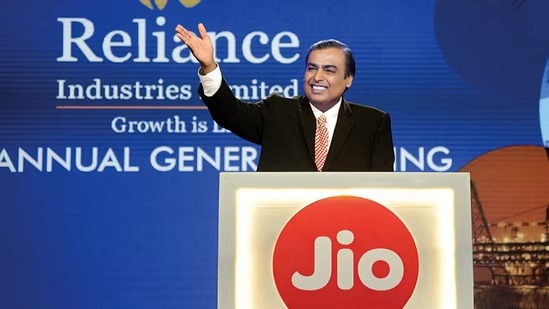@JUDGMENTTAG-ORDER
M.S. Ramachandra Rao, J.@mdashThis Revision is filed challenging the order dt. 21-06-2013 in I.A. No. 339 of 2010 in O.S. No. 18 of 2007 of the Additional District Judge, Hindupur, Anantapur District.
2. Heard the learned counsel for petitioners A. Manjunath. Although notices sent to respondent Nos. 1 and 2 are served and the 1st respondent is represented by Sri A. Hanumantha Reddy, Advocate, none appears for respondent Nos. 2 and 3.
3. The petitioners are defendant Nos. 1 to 6 and 9 in the above suit. The 1st respondent herein filed the above suit against petitioners and respondent Nos. 2 and 3 for declaration of its title to the plaint schedule property and for a perpetual injunction to restrain the petitioners from interfering with its possession and enjoyment of the plaint schedule property.
4. Written statement was filed by petitioners opposing the grant of relief to 1st respondent. Issues were framed and trial commenced.
5. One Elisha Prabhakar, Secretary to the 1st respondent filed affidavit in lieu of chief examination on 02-12-2010. In the said affidavit, he had referred to several documents. On 02-12-2010 the Court below marked the same as Exs.A-1 to A-12. Although on that day an objection was raised by the learned counsel for 3rd respondent as regards marking of Ex.A-1, which is said to be a compromise deed dt. 08-08-1998 entered into by 1st respondent with 2nd respondent, the Court below stated that the said document was marked subject to objection and the same would be seen during the final hearing of the suit.
6. The petitioners therefore filed I.A. No. 339 of 2010 in the said suit stating that 1st respondent had filed the chief-examination affidavit of P.W.1 under Order XVIII Rule 4 of CPC on 02-12-2010; the Court below had received the same and simultaneously marked the documents without posting the same for further date of hearing regarding marking of documents; before admitting the documents filed by P.W.1 in evidence, the date for hearing objections as to their admissibility should be given and there should be judicial determination of the same; and since such an opportunity was not given prior to marking of documents, and they are inadmissible documents, the Court below should provide an opportunity to both sides before marking documents and judicially determine their admissibility. This application was filed under Section 36 of the Stamp Act, 1899 r/w sec. 151 CPC.
7. The said application was dismissed by order dt. 21-06-2013 by the Court below stating that the documents have already been marked, therefore this application has become infructuous and is liable to be dismissed and that the objections of the petitioners, if any, would be considered during arguments.
8. The learned counsel for petitioners contended that this procedure followed by the Court below is contrary to law; that where a question as to admissibility of a document is raised on the ground that it has not been duly stamped or insufficiently stamped, it has to be decided then and there when the document is tendered in evidence; that Ex.A-1 is an improperly stamped document and could not have been marked by the Court below without deciding whether or not it is admissible in evidence. He contended that once documents are filed along with affidavits in the form of chief-examination, the trial Court shall give a specific date for the purpose of marking of the documents in the presence of counsel for both parties and then decide on the admissibility of the said documents, judicially determine it before marking them, and then a specific endorsement of the Judge concerned should be made to the effect that they are admitted in evidence
9. He relied on
10. The learned counsel for 1st respondent refuted the above submissions and contends that objections as to admissibility of document would be considered by the trial Court at the time of hearing arguments in the suit and therefore no prejudice is caused to petitioners by simply marking the documents.
11. I have noted the submissions of both sides.
12. The facts narrated above indicate that the affidavit in lieu of chief-examination was filed by P.W.1 on 02-12-2010 by referring to certain documents and in spite of an objection having been raised with regard to marking of Ex.A-1 by the counsel for 3rd respondent, a compromise deed filed by P.W.1, the Court below marked the document observing that the objections regarding the said document would be decided during final hearing of the suit. According to petitioners, not just Ex.A-1, but even some of the other documents also could not have been marked by the Court below without hearing the objections; and the Court cannot put off till hearing of the suit, a decision on the admissibility of the documents sought to be marked through P.W.1 which are objected to by petitioners and 3rd respondent.
13. The Supreme Court of India in
14. After amendment of the Code of Civil Procedure brought into effect in 2002, a new procedure hitherto unknown, has been introduced by amending Order XVIII Rule 4 CPC permitting filing of affidavits in lieu of chief-examination. Therefore, affidavits in lieu of chief-examination are being filed through witnesses referring to certain documents in the said affidavit in support of the case of respective parties. Therefore, neither the Court nor the opposite party has an opportunity to scrutinize the admissibility or proof of such documents. Since the objections as to admissibility of documents on the ground of insufficiency of stamp duty or registration or otherwise would have a bearing on the merits of the case, it is not open to the trial Court to mark the documents which are mentioned in the affidavit in lieu of chief-examination straight away without giving opportunity to the other party to dispute their admissibility.
15. In Vemi Reddy Kota Reddy (supra), a learned Single Judge of this Court has held that in view of the judgment of the Supreme Court in Javer Chand (supra), the Court has to judicially determine the matter as soon as the document is tendered in evidence before it is marked as an exhibit in the case and no seal can be affixed on a document whose admissibility is disputed mechanically without such a judicial determination as to its admissibility. This Court observed :
"... I am of the view that when once the documents are filed along with the affidavits in the form of chief-examination, the Courts below shall give a specific date for the purpose of marking of the documents in the presence of their Counsel and the respective parties, on which date, the admissibility of the documents have to be judicially determined before marking the documents and there shall be a specific endorsement of the Judge concerned to the effect that ''admitted in evidence'' as exhibit."
16. Court in Javer Chand (supra), the Court has to Court observed:
"6. In my opinion, unless both the parties are put on notice and the Court hears them on the admissibility of a document, mere unilateral conclusion arrived at by the Court at the time of presentation of the document along with the chief affidavit will not bind the parties.
7. In
9. Accordingly, the lower Court is directed to determine the nature of the document in question after hearing both the parties before proceeding further with the case. "
17. Similar view has been expressed in T. Basavaraju (supra) and Setti Siddamma (supra).
18. In this view of the matter, it is not open to the Court below to say that the documents have already been marked, so I.A. No. 339 of 2010 has become infructuous and it would consider the objections of the petitioners during the course of arguments.
19. Therefore, the impugned order dt. 21-06-2013 in I.A. No. 339 of 2010 in O.S. No. 18 of 2007 is set aside; the said LA. is allowed; the Court below shall treat the documents filed by PW1 on 02-12-2010 as not admitted; it shall fix a date for hearing objections as to admissibility of documents filed through P.W.1; consider the objections as to admissibility of the documents raised by petitioners and 3rd respondent; judicially determine the same; and then mark only the admissible documents with a specific endorsement that they are admitted in evidence and give exhibit numbers.
20. This Civil Revision Petition is accordingly allowed. But in the circumstances without costs.
21. As a sequel, miscellaneous petitions pending, if any, shall stand disposed of.

